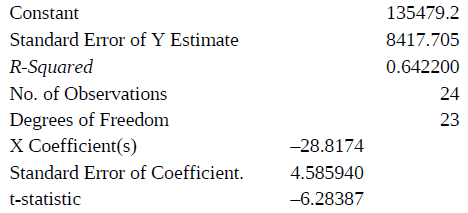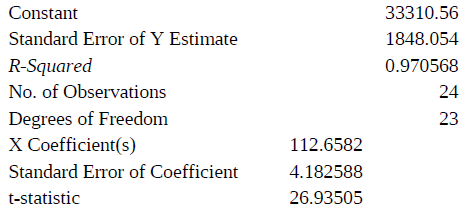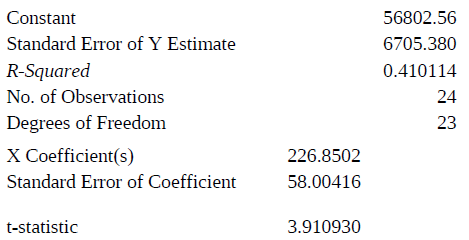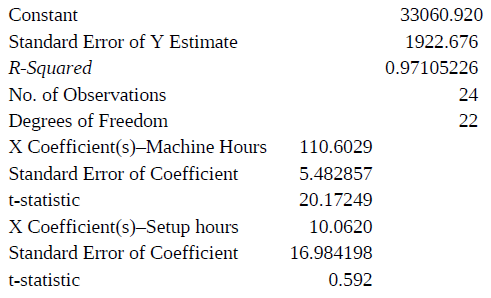a. From the results of the regression output of overhead cost with machine hours and setup hours
Question:
a. From the results of the regression output of overhead cost with machine hours and setup hours (Exhibit 3A-1, regression 4), identify the following:
- The independent variables
- The marginal cost of an additional setup hour
- The regression equation
b. Using the information provided in Exhibit 3A-1, evaluate the results of the regressions, based upon the coefficient of determination (R2).
Berengar Ltd. is a small manufacturing company that produces a variety of products using a number of different processes in different-sized job lots. For example, some products will be ordered in lots of 10 or less, while others are produced in batches of up to 1,000 units. Berengar will modify products as required by customer order and, thus, there is little product standardization. Despite the high level of product differentiation, Berengar has, up until now, used a single factory-wide overhead rate based upon direct labour hours. The company president, J.P. Blomer, believes that this over-simplified way of applying overhead has led to the loss of several contracts for long production runs (that is, large job lots) of two of Berengar’s most popular products.
Blomer has consulted with the operations staff in the machining department to see whether they have any suggestions for alternate overhead bases (other than direct labour hours for their department).
Because of the recent addition of five numerically controlled machines, the supervisor of scheduling has noticed that direct labour hours in the department have declined considerably. The chief production engineer for machining believes that, with the new machine environment, production overhead probably varies more with machine-hours per batch and setup time than it does with the current overhead application base, direct labour hours.
Blomer asked the controller to run four regressions to assist in predicting overhead cost in the machining department. The four regressions were based on:
1. Direct labour hours
2. Machine-hours
3. Setup hours
4. Machine-hours and setup hours
One problem that the controller had to deal with was that approximately 35 percent of departmental overhead consisted of various lump-sum monthly charges for central services such as personnel and power. The controller decided that these charges were justifiably an expense of running the machining department and left them in for the regression analyses.
Berengar Ltd. Machine
Department Data for
Regression Analysis
Most Recent 24 Weeks

Regression 1
Regression Output: Overhead cost with direct labour hours

Regression 2
Regression Output: Overhead cost with machine hours

Regression 3
Regression Output: Overhead cost with setup hours

Regression 4
Regression Output: Overhead cost with machine hours and setup hours

Step by Step Answer:

Management Accounting
ISBN: 978-0132570848
6th Canadian edition
Authors: Charles T. Horngren, Gary L. Sundem, William O. Stratton, Phillip Beaulieu





